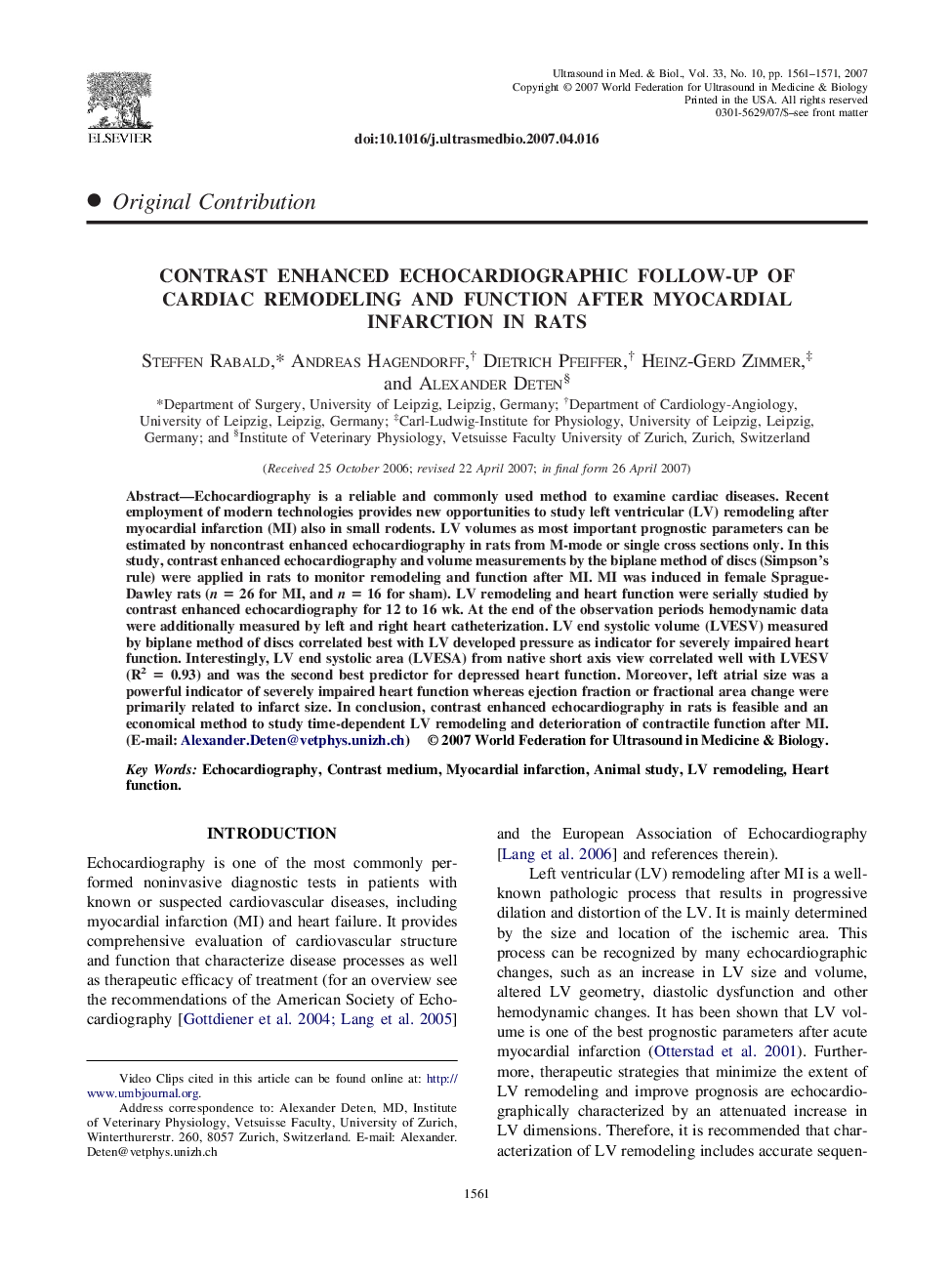| Article ID | Journal | Published Year | Pages | File Type |
|---|---|---|---|---|
| 1762456 | Ultrasound in Medicine & Biology | 2007 | 11 Pages |
Abstract
Echocardiography is a reliable and commonly used method to examine cardiac diseases. Recent employment of modern technologies provides new opportunities to study left ventricular (LV) remodeling after myocardial infarction (MI) also in small rodents. LV volumes as most important prognostic parameters can be estimated by noncontrast enhanced echocardiography in rats from M-mode or single cross sections only. In this study, contrast enhanced echocardiography and volume measurements by the biplane method of discs (Simpson's rule) were applied in rats to monitor remodeling and function after MI. MI was induced in female Sprague-Dawley rats (n = 26 for MI, and n = 16 for sham). LV remodeling and heart function were serially studied by contrast enhanced echocardiography for 12 to 16 wk. At the end of the observation periods hemodynamic data were additionally measured by left and right heart catheterization. LV end systolic volume (LVESV) measured by biplane method of discs correlated best with LV developed pressure as indicator for severely impaired heart function. Interestingly, LV end systolic area (LVESA) from native short axis view correlated well with LVESV (R2 = 0.93) and was the second best predictor for depressed heart function. Moreover, left atrial size was a powerful indicator of severely impaired heart function whereas ejection fraction or fractional area change were primarily related to infarct size. In conclusion, contrast enhanced echocardiography in rats is feasible and an economical method to study time-dependent LV remodeling and deterioration of contractile function after MI. (E-mail: Alexander.Deten@vetphys.unizh.ch)
Keywords
Related Topics
Physical Sciences and Engineering
Physics and Astronomy
Acoustics and Ultrasonics
Authors
Steffen Rabald, Andreas Hagendorff, Dietrich Pfeiffer, Heinz-Gerd Zimmer, Alexander Deten,
